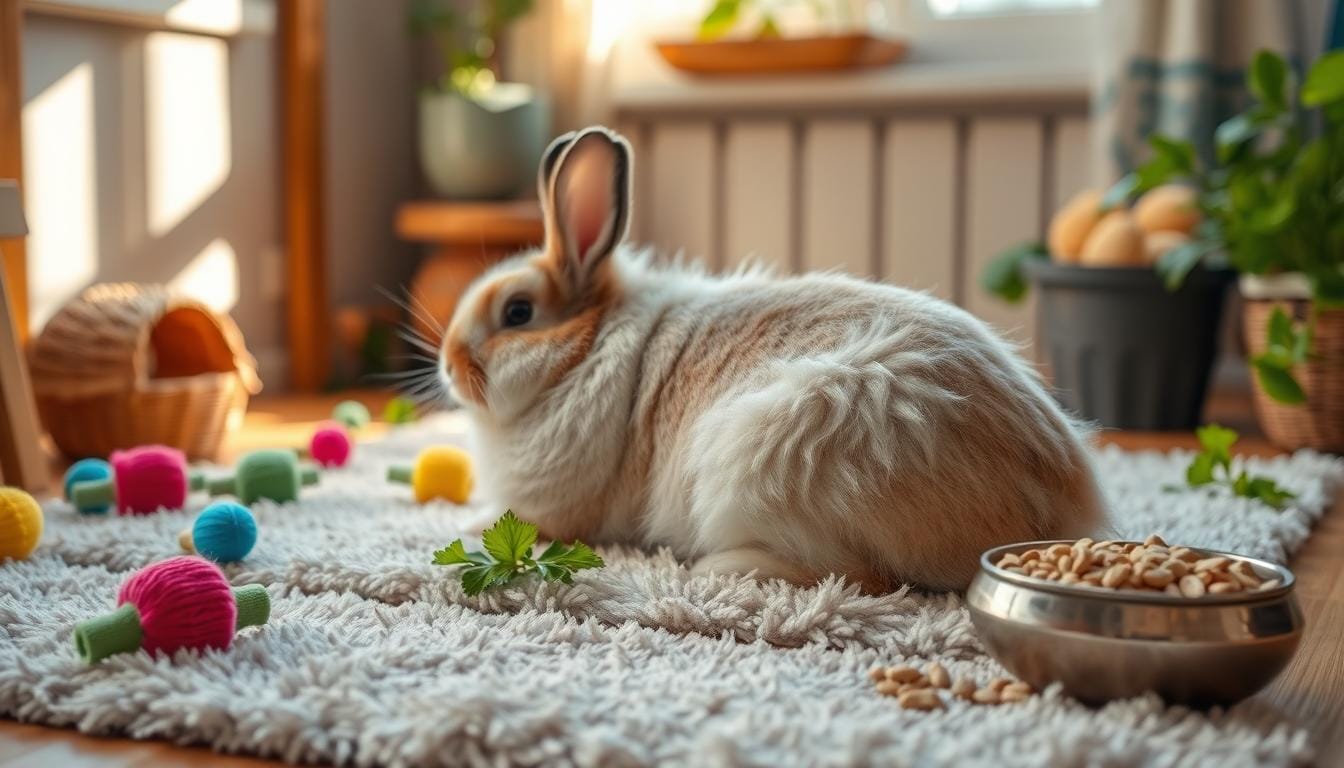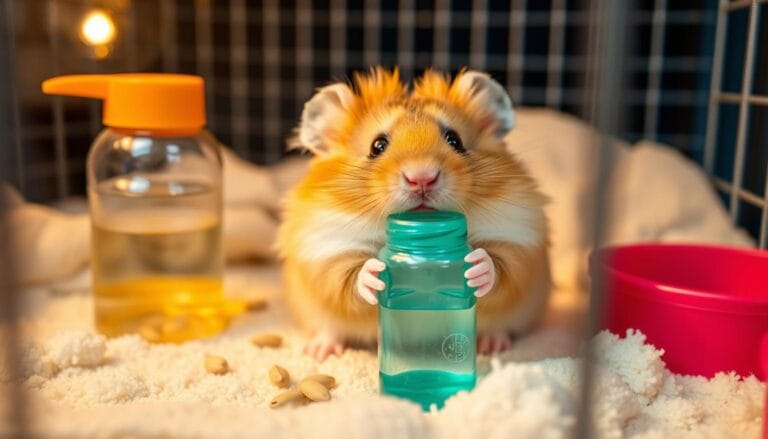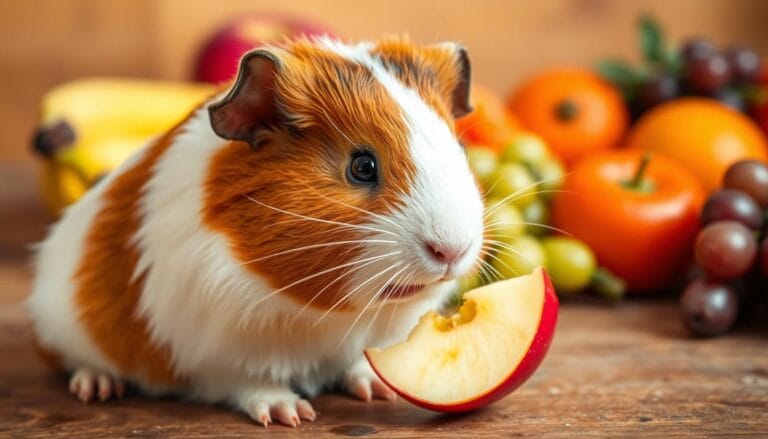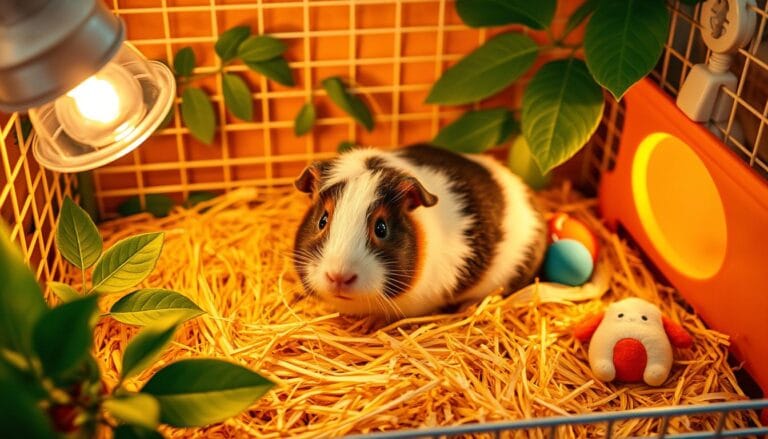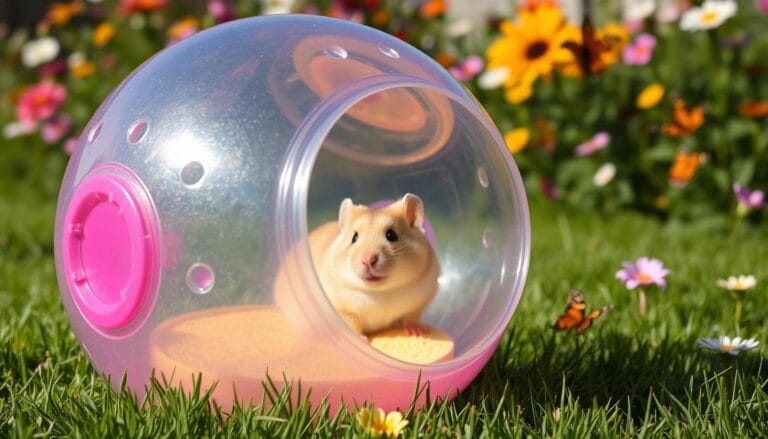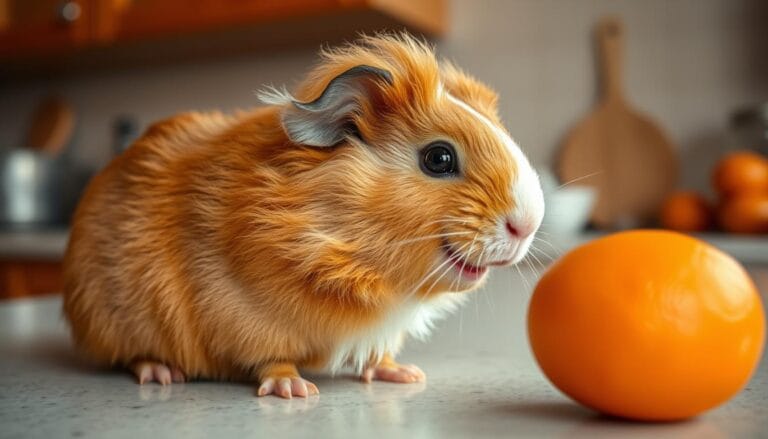Fat Rabbit: Proven Secrets to Happy, Healthy Care
As a responsible pet owner, you want to give your fat rabbit the best life. They can live over 10 years with the right care. It’s key to know what they need, like a balanced diet, exercise, and social time.
Table of Contents
By following the right steps, your fat rabbit can be happy and healthy. Every rabbit is different, so it’s important to tailor your care to fit their needs. This guide will help you, whether you’re new or experienced in caring for a fat rabbit.
Key Takeaways
- Provide a balanced diet consisting of approximately 80% hay, 10-20% fresh greens and vegetables, and about 5% pellets for your fat rabbit.
- Ensure your fat rabbit gets daily exercise outside their enclosure to maintain health and prevent obesity.
- Create a safe and comfortable habitat with a minimum of 16 square feet of living space for a single rabbit.
- Regular veterinarian check-ups are suggested at least once a year for maintaining rabbit health.
- Daily cleaning of the litter box and living space is essential to prevent health problems related to waste and flies.
- Spaying or neutering your fat rabbit can help mitigate certain health problems and behavioral issues.
- Monitor your fat rabbit’s health and adjust their care according to prevent signs of illness such as change in appetite, weight loss, lethargy, or diarrhea.
Understanding Your Fat Rabbit’s Needs
As a responsible owner of a chubby bunny, it’s key to know their unique needs. A chunky bunny needs a balanced diet and regular exercise to stay healthy. It’s important to keep an eye on your rabbit’s weight and body shape.
Experts say a healthy rabbit should have a smooth curve from neck to tail, and hips. The spine and ribs should feel rounded, not sharp. You can use the Rabbit Size-O-Meter to check your rabbit’s weight and body condition. Touching your rabbit regularly is also helpful, as their thick fur hides their body condition.
Signs Your Rabbit Is Overweight
Signs of obesity in rabbits include a rounded body shape, trouble moving, and breathing issues. If you see these signs, it’s vital to talk to a vet. They can help figure out the best plan for your chubby bunny.
Common Causes of Weight Gain in Rabbits
Weight gain in rabbits often comes from eating too much high-energy food and not enough exercise. To avoid this, give your chunky bunny a balanced diet. Include a small amount of good quality, extruded nugget, unlimited hay, and fresh grass, greens, or herbs every day.
Health Risks Associated with Obesity
Being overweight is a big health risk for rabbits. It can cause many health problems. To keep your chubby bunny healthy, monitor their weight and body shape. Also, make sure they get a balanced diet and regular exercise.
Creating the Perfect Diet Plan
As a responsible owner of a fat rabbit, it’s key to create a diet plan that fits their needs. A balanced diet is vital for your fat rabbit’s health and wellbeing. Experts say a good diet for a fat rabbit includes lots of hay, a bit of pellets, and various veggies.
Hay is a big part of a fat rabbit’s diet, making up at least 85% of their daily food. Timothy hay and mixed grass hay are great choices because they’re low in calories and calcium. You can also add leafy greens like kale, spinach, and collard greens. These greens are full of nutrients and help with digestion.
Here are some tips for your fat rabbit’s diet:
- Limit pellets to no more than 10% of your fat rabbit‘s daily intake
- Introduce new foods gradually to prevent digestive upset
- Provide a variety of leafy greens to ensure a range of nutrients
- Limit fruits to once or twice a week due to their high sugar content
Remember, every fat rabbit is unique, and their diet needs can change based on age, health, and lifestyle. Always talk to your vet to find the best diet for your fat rabbit. A balanced and nutritious diet helps your fat rabbit stay healthy and happy.
Exercise Strategies for Your Chunky Bunny
As a responsible owner of a chunky bunny, it’s key to get your pet moving regularly. This keeps them physically and mentally healthy. For a fat rabbit, exercise is vital to avoid obesity-related health problems. A mix of safe activities and a good exercise plan can really help.
Safe exercises for your chunky bunny include hopping, playing, and exploring. Make their environment fun with toys, tunnels, and climbing spots. This encourages them to stay active. Also, make sure they have enough room to roam and play, as a small cage can limit their exercise.
Safe Exercise Activities
- Hopping: Provide a safe and spacious area for your rabbit to hop around, such as a large room or a secure outdoor enclosure.
- Playing: Engage your rabbit in play activities, such as chasing toys or playing with interactive toys.
- Exploring: Allow your rabbit to explore new areas, such as a new room or a secure outdoor area, to encourage curiosity and exercise.
Always watch your rabbit during exercise and play to keep them safe. A fun and engaging space helps your chunky bunny stay active, healthy, and happy.
Setting Up a Weight-Loss Friendly Habitat
As a responsible owner of a fat rabbit, creating a weight-loss friendly habitat is key. A well-designed environment encourages exercise and play. This helps your fat rabbit lose weight. Studies show that a good habitat has plenty of space, ventilation, and hiding spots.
Providing enough space for your fat rabbit to move is vital. A minimum of 6m² is recommended for a pair of average size rabbits. This space can be filled with tunnels, toys, and climbing structures to keep them active.
The flooring and bedding in the habitat are also important. Use soft and dust-extracted straw to prevent eye and respiratory issues. Regular access to grass can also help prevent sore heels. A wire-mesh skirt keeps the enclosure safe and prevents digging.
- Plenty of space to move around and exercise
- Ventilation and hiding places to reduce stress
- Soft and dust-extracted straw bedding
- Regular access to grass and outdoor areas
- A wire-mesh skirt to secure the enclosure and prevent digging
By adding these features, you can create a habitat that supports your fat rabbit’s health. This helps them live a happy and active life.
The Emotional Well-being of Your Fat Rabbit
When helping your chubby bunny get healthier, think about their feelings too. A chunky bunny’s mental health affects their body health. So, it’s key to create a loving and supportive space. Studies show kindness, love, and social time can make a rabbit’s health better.
Research shows rabbits that get regular attention are less stressed and healthier. For instance, a study found that rabbits that got gentle handling had less fat in their blood vessels. This shows how important a caring environment is for your fat rabbit’s emotional health.
- Give them regular handling and playtime, like petting and playing
- Give them lots of toys and activities to keep them busy and happy
- Make sure their living space is safe and comfy, meeting their physical and emotional needs
By focusing on your chunky bunny’s emotional health, you can help them live a happier, healthier life. Remember, every rabbit is different. So, make sure your approach fits your rabbit’s special needs and personality.
Health Monitoring and Veterinary Care
As a responsible owner of a fat rabbit, it’s key to watch their health closely. Regular vet visits can spot health problems early. This ensures your rabbit gets the best care. A healthy diet and exercise are vital for your rabbit’s health, and a vet can help create a plan for them.
Watch out for heart disease, liver disease, and urinary tract infections in fat rabbits. Also, check their body condition score (BCS). It ranges from 1 to 5, with 3 being ideal. A vet can help keep your rabbit at a healthy weight and avoid health problems.
Here are some tips for monitoring your fat rabbit’s health:
- Regularly check your rabbit’s weight and adjust their diet and exercise plan
- Monitor your rabbit’s appetite and stool quality
- Look out for signs of illness, such as lethargy or difficulty breathing
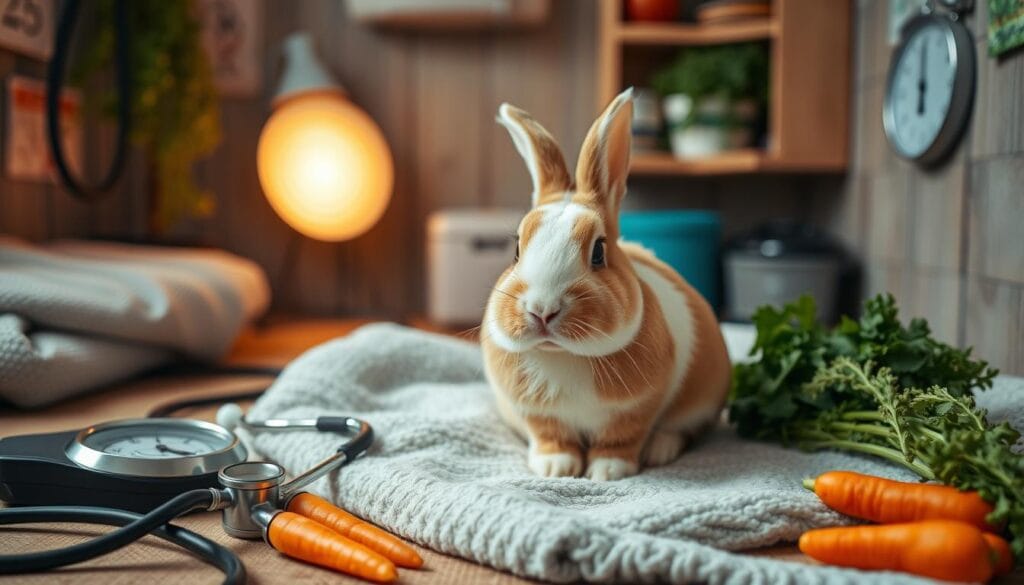
By following these tips and working with a vet, you can help your fat rabbit live a long, healthy life. Remember, every fat rabbit is unique. Tailor your approach to their specific needs and health status.
Proper Grooming for Your Chubby Bunny
As a responsible owner of a chunky bunny, it’s key to know how grooming keeps them healthy. Regular grooming stops hairballs, cuts down on shedding, and spots health problems early. For chubby bunnies, brushing them weekly is a must to manage shedding and stop matting.
Long-haired rabbits need more grooming to avoid fur matting and tangling. Brush your long-haired chunky bunny every day. Short-haired ones can get brushed once or twice a week. Brushing often also stops gut problems from too much fur swallowing.
- Brushing your rabbit regularly to prevent matting and tangling
- Checking for unusual signs such as lumps, scratches, or dental issues
- Trimming your rabbit’s nails regularly to prevent overgrowth
- Inspecting your rabbit’s ears for wax buildup or mites
By following these grooming tips, you can keep your chubby bunny healthy and happy. Always be gentle and patient when grooming them. They can be sensitive and may not like it. With regular grooming and proper care, your chubby bunny can live a long and healthy life.
Social Interaction and Playtime
As a fat rabbit owner, you know how key it is to give your pet a lively space. Rabbits love to interact and play. Without it, they might show signs of stress like bar biting. Studies show that single rabbits often act out, showing they need friends.
To keep your fat rabbit happy, you can spend time with them. Play with toys or just cuddle. Rabbits need 3 to 4 hours of human time daily. Leaving them alone for too long can harm them. Here are some ways to make playtime fun for your rabbit:
- Give your rabbit a big space to roam. A 3m x 2m x 1m area is good for two rabbits.
- Offer different toys and activities. This keeps them busy with digging, jumping, and exploring.
- Play with your rabbit using balls, tunnels, or other fun toys.
Playtime and social interaction are vital for your rabbit’s health. A lively environment and regular play can make your rabbit’s life better.
Common Mistakes to Avoid
As a responsible owner of a chubby bunny or chunky bunny, it’s key to know common mistakes. These can harm your pet’s health. Diet errors, like too much food, can lead to obesity and other issues. A good diet has about 80% hay, 10% leafy greens, and 5% pellets.
Exercise mistakes are also important. Rabbits need to move to stay healthy, but too much can be bad. Make sure your bunny has a safe place to play and exercise. Also, make sure they get enough social time and mental challenges.
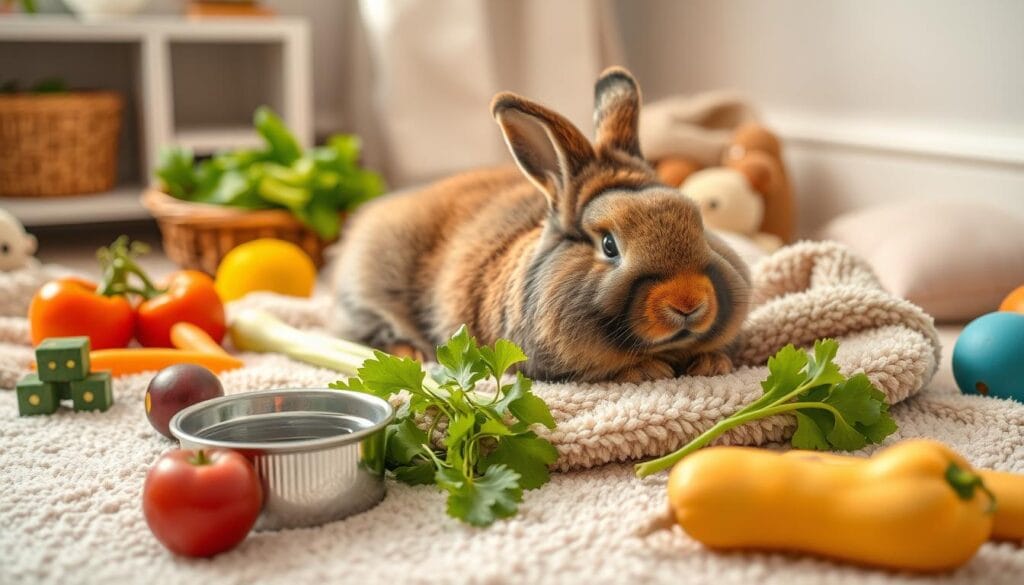
- Provide a balanced diet with plenty of hay and leafy greens
- Create a safe and stimulating environment for exercise and play
- Ensure adequate social interaction and mental stimulation
By avoiding these mistakes, you can make a happy and healthy home for your bunny.
Celebrating Progress and Milestones
When you care for your fat rabbit, it’s key to celebrate every win. This boosts your motivation to keep giving your best. It also deepens the connection you share with your pet. Small victories, like losing a bit of weight or having more energy, are big deals for your fat rabbit’s health.
Here are some ways to mark these achievements:
- Set up a reward system with healthy snacks or fun playtime
- Keep track of your progress in a journal or app
- Share your successes with loved ones to stay inspired
Every little bit matters, and recognizing these moments keeps you focused. By celebrating, you make sure your fat rabbit gets the top-notch care they deserve. This leads to a happier, healthier life for them.
Building a Support System
As a responsible owner of a chunky bunny, it’s key to build a support system. This ensures your pet’s health and happiness. You can do this by working with a vet and joining rabbit owner groups. These steps give you access to important resources and advice on caring for your bunny.
Getting regular check-ups with a vet is vital for your bunny’s health. These visits help spot health issues early, preventing bigger problems. Your vet can also give you tailored advice on diet, exercise, and more.
Joining rabbit owner groups is another great way to get support. These groups let owners share experiences, ask questions, and learn from each other. You can meet other owners of chunky and chubby bunnies and get tips on their care.
Some benefits of joining rabbit owner groups include:
- Access to a lot of knowledge and experience from other owners
- Getting support and advice on caring for your bunny
- Learning about new products and services that can improve your bunny’s life
Building a support system helps you care for your chunky bunny better. Remember, caring for a chubby bunny means a big commitment to their health and happiness. With the right support, your pet can live a long, happy, and healthy life.
Conclusion: Your Journey to a Healthier, Happier Rabbit
Caring for a fat rabbit is a big job. It needs a mix of diet changes, exercise, and lifestyle tweaks. By following our guide, you can help your fat rabbit stay healthy. Remember, it’s a journey, not just a goal.
Keep working hard for your fat rabbit. Celebrate the good times and don’t get down about the tough ones. With time, effort, and support, your fat rabbit will live a happy life. Always talk to your vet and learn new things about caring for fat rabbits.
Working towards a healthier life for your fat rabbit brings you closer together. Your love and care show in every way. Keep doing what you’re doing and enjoy the journey!
FAQ
What are the signs that my rabbit is overweight?
An overweight rabbit looks like a “barrel” and has trouble grooming. They also move less. Always check your rabbit’s weight and body shape.
What are the common causes of weight gain in rabbits?
Rabbits gain weight from eating too much, not moving enough, or health problems. Give them the right food and make sure they exercise.
What health risks are associated with obesity in rabbits?
Obesity can cause breathing issues, joint pain, and increase diabetes and heart disease risks. It’s key to tackle weight issues early for your rabbit’s health.
How can I create the perfect diet plan for my fat rabbit?
A good diet for a fat rabbit includes hay, veggies, and a little bit of pellets. Slowly add new foods and watch your rabbit’s weight loss.
What are some safe exercise activities for my chunky bunny?
Safe exercises for a chunky bunny include playtime in a safe area. Make an exercise plan and check on their progress to keep them healthy and active.
How can I create a weight-loss-friendly habitat for my fat rabbit?
A big, fun space that encourages movement helps with weight loss. Add toys, hiding spots, and enough room for them to move.
How can I support the emotional well-being of my fat rabbit during their weight loss journey?
Keep your rabbit happy by being positive, reducing stress, and celebrating small wins. This makes their weight loss journey easier and healthier.
What should I keep in mind when it comes to grooming a chubby bunny?
Chubby bunnies need extra grooming care. Regular brushing and watching for skin problems keeps them comfortable and healthy.
How can I encourage social interaction and playtime for my fat rabbit?
Make playtime fun and offer chances for socializing. This keeps your fat rabbit’s mind and body active during weight loss.
What are some common mistakes to avoid when caring for a fat rabbit?
Avoid diet mistakes like overfeeding and wrong foods. Also, be careful with exercise and behavior during weight loss. Knowing these mistakes helps in a successful weight management plan.
There are no reviews yet. Be the first one to write one.

